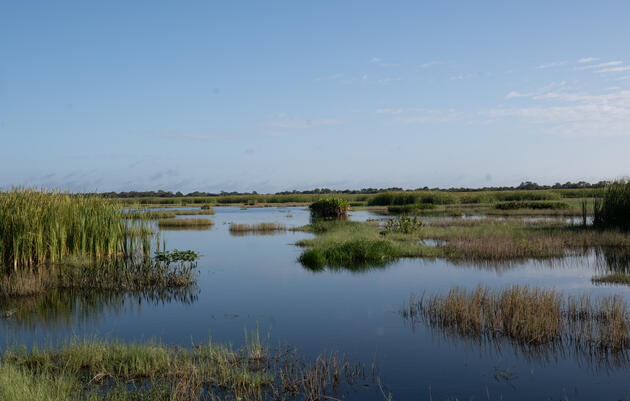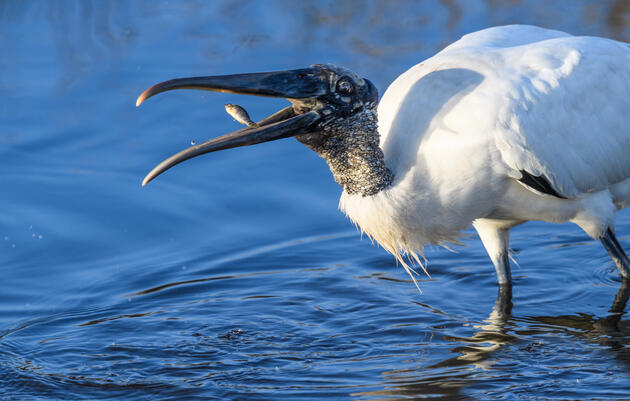This week Audubon celebrated a major step forward in efforts to clean up the St. Lucie Estuary. The Scott Water Farm stores water across 7,500 acres of private land, approved by the South Florida Water Management District (SFWMD) in 2018. The project is designed to capture 29,000 acre-feet of polluted water before it reaches the St. Lucie Estuary (SLE), either from rainfall or pumped from the C-25 canal.
The newly-completed initiative contains two basins, one located in Northern Okeechobee County and the other in Southern Indian County. The farm is adjacent to the Turnpike Canal in the northern C-25 basin and it feeds into the C-25 Canal Extension about five miles west of the S-99 discharge point. In addition to storing approximately 8.8 billion gallons of water, it will remove 3.8 metric tons of phosphorus and 22.2 metric tons of nitrogen per year. It is one of two water farms in the area built on former citrus groves, where partnerships with private landowners make them a part of the solution to water quality issues.
Why Water Farming?
Water farming captures onsite rainfall and diverts and stores water from canals when discharges could harm estuaries; the practice is a part of the district’s Dispersed Water Management Program. The project will help prevent future harmful algal blooms in the SLE and the Indian River Lagoon. The SFWMD will control the withdrawals of water from canals to the farm’s reservoirs where, once stored, it will percolate into soil, recharging the aquifers as well.
How Does this Project Impact the Everglades?
The Scott Water Farm is an important part of the Northern Everglades and Estuaries Protection Program, led by the Florida Department of Environmental Protection. Harmful algal blooms have been a recurring issue in Florida, especially in the SLE due to excess nutrients such as phosphorus and nitrogen from upstream urban runoff and agriculture. Algal blooms damage plants and wildlife and are a public health risk. When blooms occur, typically in summers following heavy rainfall events, it affects the health and use of the waters, thereby also harming Florida’s tourism economy. It is estimated that 200,000 acre-feet of water must be stored regionally to reduce damage to the SLE from discharges and freshwater inflows. Sixty-thousand will be stored in the C-44 Reservoir and stormwater treatment areas, and this water farm gets us another 15% closer to the 200,000 acre-foot goal.
“The St. Lucie River and Indian River Lagoon are incredible treasures to our state and country, due to their vast biodiversity and beauty. This project is one more step in protecting these special gems against harmful nutrients from the St. Lucie River Watershed,” said Audubon Florida’s Everglades Science Coordinator, Paul Gray, Ph.D.







